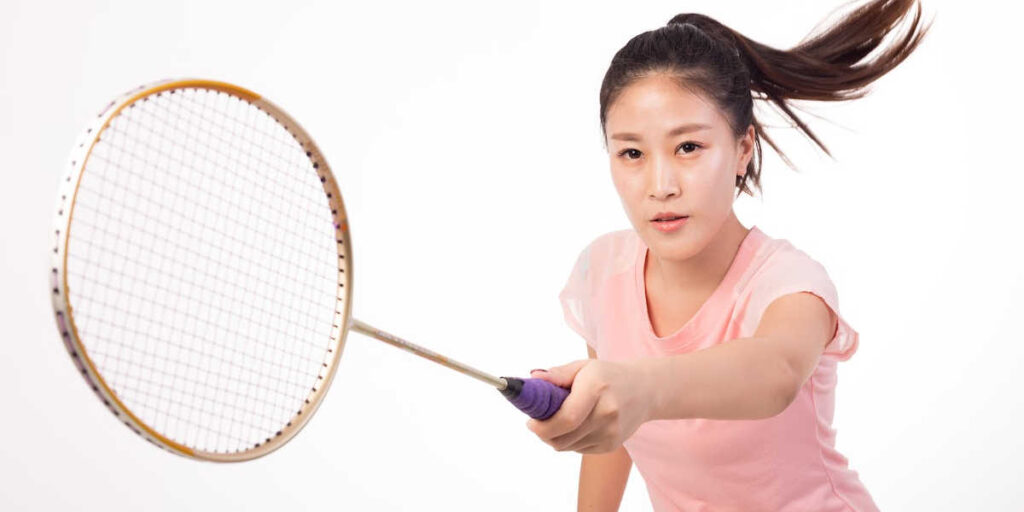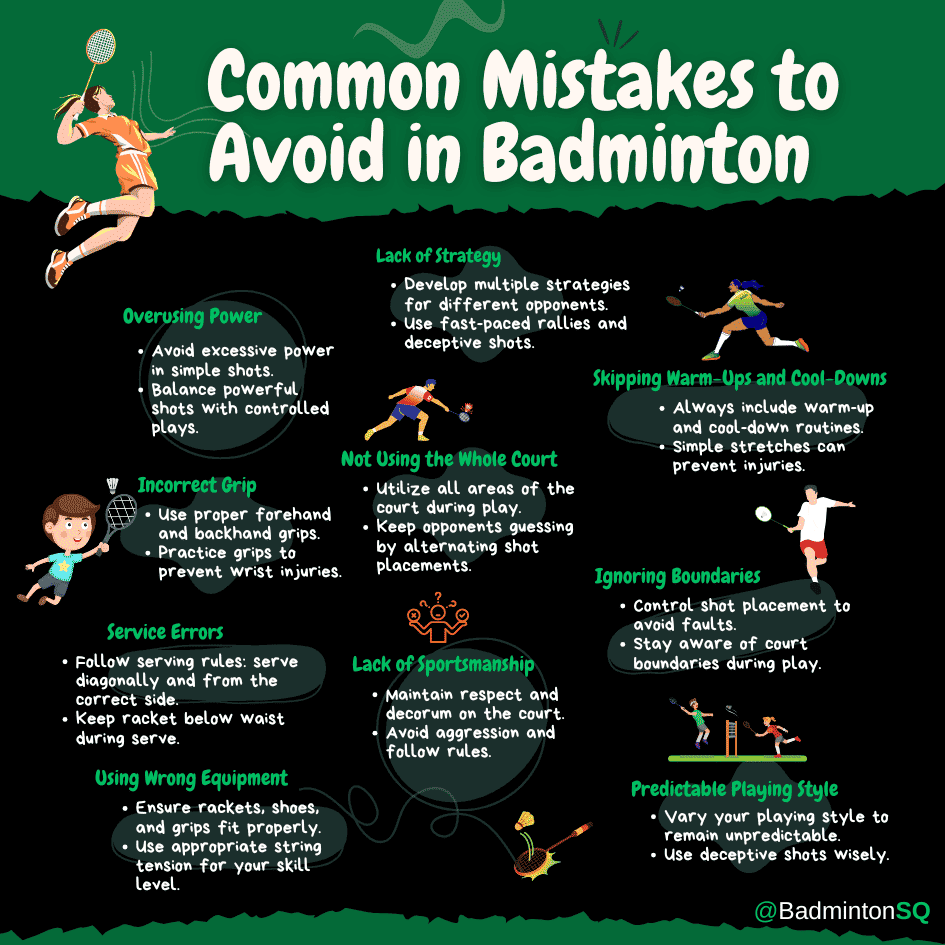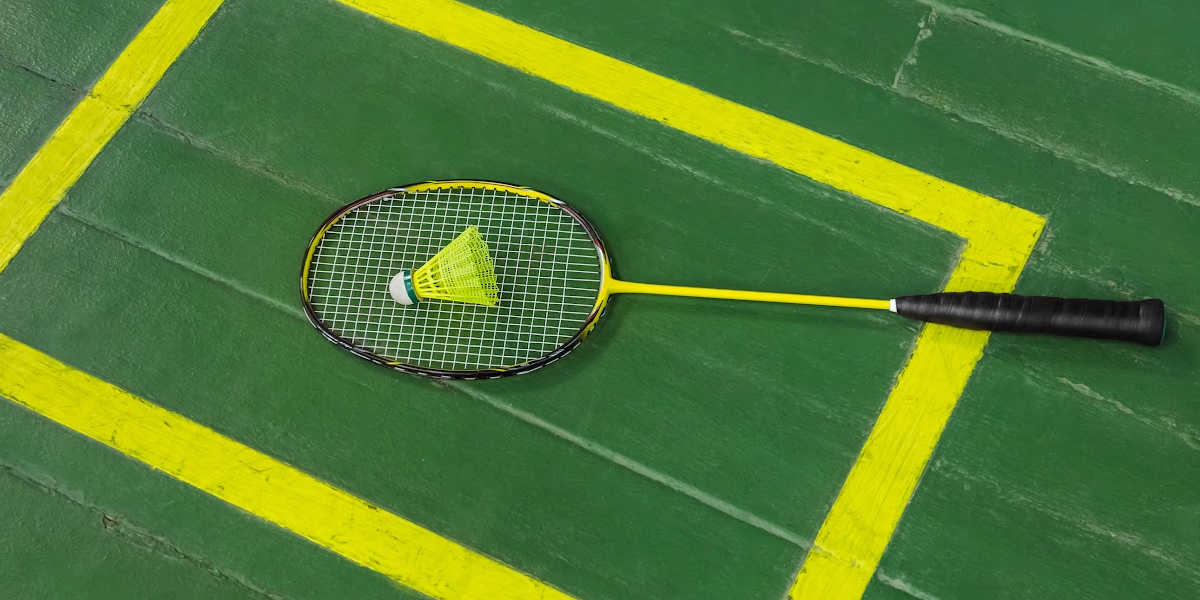It’s natural to make mistakes in badminton. And it’s alright to keep on making mistakes until you are learning from them.
I personally believe that we shouldn’t make the same mistake twice. Learn how and why you made the mistake and avoid doing the same things when you are in the same situation again.
It’s easy to apply this to badminton. Know how and why you lost a point, missed a hit, or shot in the wrong spot. And don’t do that again.

Beginners find it difficult to recognize these mistakes, especially if they are learning on their own. Some advanced players have difficulty remembering the basics and make the silliest mistakes.
For all such badminton players, I have listed 12 common mistakes that you should avoid at all costs.
1. Incorrect Grip
If you hold the badminton racket incorrectly, you could hurt your wrist, or your shots may not go through the way you intend.
The solution to this mistake is to practice your grips. You know there are two types of grips in badminton – forehand grip and backhand grip.
- Each serves a different purpose and should be used for those shots only.
- There’s a unique way to hold these grips. Learn and practice them so you don’t hurt yourself.
- If your grip is uncomfortable, you could place an extra grip on the original to get the much-required support.
- If a grip is too big for your hand, think of sizing down to your size.
2. Overusing Power
Some players tend to overuse power in their shots or only play powerful shots throughout the game. Both are huge mistakes as they are going to cost you points.
- Overusing power in simple shots will land your shuttlecock farther away than you would want.
- Playing only smashes and drives throughout the game will make you predictable, and your opponent could exploit this by taking net shots.
Learn to control the power you put in your shots. Practice by yourself against a wall at different distances. Try to land the shuttlecock just in front of the wall but without touching the wall. This will make you gain control over how much power you use in different shots.

3. Lack of Strategy
Badminton isn’t just a physical sport. You need a well-defined strategy to win rallies. Not having a strategy, let alone a good one is one of the biggest mistakes in badminton.
I know a single strategy is not going to work for all your opponents. But swinging it is not going to cut it. You need to have a few different strategies that you could implement.
- You could wear out the opponent by dictating fast-paced rallies early in the game, making them too tired to return your further shots.
- You could keep on switching between different types of shots so you are unpredictable, and the opponents couldn’t get a read on you.
- You could use deceptive shots to make opponents feel you are aiming for a different part of the court.

4. Skipping Warm-Ups and Cool-Downs
Skipping warm-ups and cool-downs even if you are playing casually is a mistake because you could end up pulling a muscle. This pain will linger until the muscle has time to heal. Playing with an unhealed muscle could extend the injury further.
That’s why having a warm-up and cool-down routine is necessary. It doesn’t have to be too long. Simple stretching exercises could do the trick. These are important to ensure long-term fitness and performance.
5. Static Play
Static play is when you stay stationary in one position or don’t move around a lot during the match. This gives your opponent a huge chance to hit the shuttlecock far away from your current position, and you’ll end up losing the rally.
For instance, if you are placing yourself near the net by thinking you will block all shots before they get too far behind. But what if it’s an overhead shot?
So, it’s best to keep on moving throughout the field instead of holding a single position. Actually, make a habit of coming to the center of your court after every shot. This way, you have an equal distance to cover all your sides.
6. Service Errors
Service errors are one of the most common errors in badminton. And you should not do them. I know serving rules in badminton are a bit tricky. But learn them! There’s no excuse.
- Make sure you are in the service area while serving.
- Always serve diagonally.
- Serve from the correct side of the court based on what the score is.
- Don’t do a toss serve; it’s not allowed in badminton.
- While serving, always keep the racket below your waist when it touches the shuttlecock.
- Don’t fit the shuttlecock so hard that it will go beyond the court boundaries.
7. Using Wrong Equipment
Using the wrong equipment while playing badminton will hinder optimal performance. This applies to equipment like rackets, shoes, and grips.
- Rackets: If you use a racket that is too big or too small for your size, you won’t achieve the desired result. Rackets with the wrong string tension for your skill level could become hard to control.
- Shoes: You must wear badminton shoes. They should not be slippery or too hard that you will scratch the court surface. Also, make sure they are of the right size. Wear sweat-absorbent socks inside to avoid causing a slippery base.
- Grips: If you sweat a lot and don’t use an absorbent grip, your racket will slip from your hands. So, make sure you are using an appropriate grip. Also, it should be of the right size.
8. Ignoring Boundaries
Sometimes, badminton players get overexcited and hit a shot that lands beyond the boundaries of the court. This leads to losing a point.
You must always control where your shot lands. Learn to control the power you put in your shots and precision shots to make sure they land where you want.
There’s another mistake that happens when you ignore boundaries – You step on or beyond the boundary line. This is considered a fault in badminton.
So, always be mindful of your surroundings. Ensure you are always within the court area. If you are playing too close to the boundary, try to take the rally inwards.
9. Predictable Playing Style
When you follow a single playing style throughout the match or in all your matches, your opponent is able to grasp it easily. It opens you up to attack because your next move is already predicted by the opponent.
That’s why you should keep on switching between different styles. Don’t make it easy for your opponent to read you. Be unpredictable and use deceptive shots in your play. But don’t use them so much that even they become predictable.

10. Lack of Sportsmanship
Showing a lack of sportsmanship on the court never bodes well for your career. Actually, this is not limited to badminton; it applies to all sports.
Lack of sportsmanship includes
- Showing aggression
- Ignoring rules
- Not following the referee’s commands
- Misusing the equipment
- Tampering with the opponent’s equipment
You should always uphold decorum on the court. Never lose your temper, no matter what the situation is. Be respectful of everyone around you. Be a good sportsman/woman.
11. Giving Up Too Early
Never give up on a rally too early. Play until there’s no way to keep it going anymore. A fast-paced rally means your opponent is probably trying to wear you out.
Don’t let them get to you. Keep on responding until you can. Never break a rally just because you aren’t sure you could take the next shot. Take that shot. It’s okay if you missed it, but at least you didn’t give up.
12. Not Using the Whole Court
Some players only use specific areas of the court for playing. That’s not ideal because the rest of the court goes unused with a lot of potential.
You can keep your opponent on their toes by altering between rear-court and front-court shots. Also, if your opponent is on the right side, place a shot on the left. They will probably miss it. This way make use of the entire court.

Final Thoughts
Now that you are enlightened about these common badminton mistakes, you should never forget them. Always keep them in your mind when you are about to play or on the court.
Most importantly, Learn from your mistakes. I cannot emphasize that enough. Watch others play and note the mistakes they make. Add them to your list and practice ways to avoid them.
You can also share your mistakes and how you corrected them in the comments so your peers can learn to avoid them.
